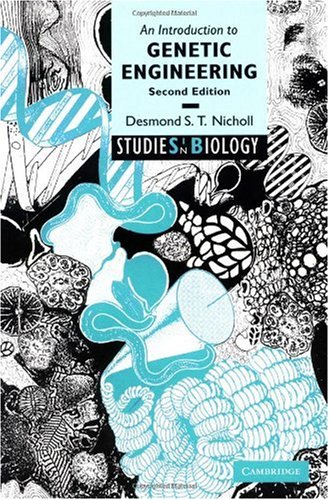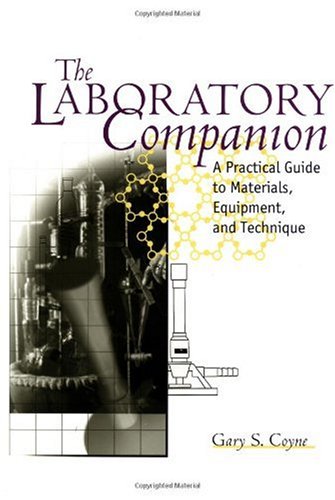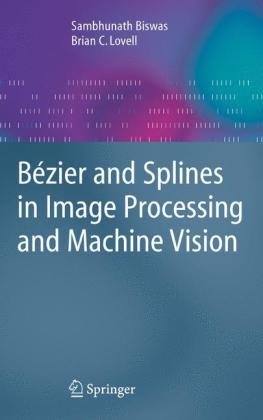Desmond S. T. Nicholl0-511-33689-6, 0-521-00471-3, 0521808677
Table of contents :
Cover……Page 1
Half-title……Page 3
Series-title……Page 4
Title……Page 5
Copyright……Page 6
Contents……Page 7
Preface to the second edition……Page 13
1.1 What is genetic engineering?……Page 15
1.2 Laying the foundations……Page 17
1.3 First steps……Page 18
1.4 What is in store?……Page 20
Part I The basis of genetic engineering……Page 23
2.1 The flow of genetic information……Page 25
2.2 The structure of DNA and RNA……Page 27
2.3 Gene organisation……Page 30
2.3.1 Gene structure in prokaryotes……Page 32
2.3.2 Gene structure in eukaryotes……Page 33
2.4 Gene expression……Page 35
2.5.1 Genome size and complexity……Page 37
2.5.2 Genome organisation……Page 38
3.1 Isolation of DNA and RNA……Page 41
3.2 Handling and quantification of nucleic acids……Page 43
3.3.1 End labelling……Page 44
3.3.3 Labelling by primer extension……Page 45
3.5 Gel electrophoresis……Page 47
3.6 DNA sequencing……Page 49
3.6.2 Sanger–Coulson (dideoxy or enzymatic) sequencing……Page 51
3.6.3 Electrophoresis and reading of sequences……Page 54
4.1 Restriction enzymes – cutting DNA……Page 57
4.1.1 Type II restriction endonucleases……Page 58
4.1.2 Use of restriction endonucleases……Page 59
4.1.3 Restriction mapping……Page 61
4.2.1 Nucleases……Page 62
4.2.2 Polymerases……Page 63
4.2.3 Enzymes that modify the ends of DNA molecules……Page 65
4.3 DNA ligase – joining DNA molecules……Page 66
Part II The methodology of gene manipulation……Page 69
5 Host cells and vectors……Page 71
5.1.1 Prokaryotic hosts……Page 72
5.1.2 Eukaryotic hosts……Page 73
5.2 Plasmid vectors for use in E. coli……Page 74
5.2.2 Basic cloning plasmids……Page 75
5.2.3 Slightly more exotic plasmid vectors……Page 77
5.3.1 What are bacteriophages?……Page 80
5.3.2 Vectors based on bacteriophage lamda……Page 84
5.3.3 Vectors based on bacteriophage M13……Page 88
5.4 Other vectors……Page 89
5.4.1 Hybrid plasmid/phage vectors……Page 90
5.4.2 Vectors for use in eukaryotic cells……Page 91
5.4.3 Artificial chromosomes……Page 93
5.5.1 Transformation and transfection……Page 94
5.5.2 Packaging phage DNA in vitro……Page 95
5.5.3 Alternative DNA delivery methods……Page 97
6.1 Which approach is best?……Page 101
6.2 Cloning from mRNA……Page 103
6.2.1 Synthesis of cDNA……Page 104
6.2.2 Cloning cDNA in plasmid vectors……Page 107
6.2.3 Cloning cDNA in bacteriophage vectors……Page 110
6.3 Cloning from genomic DNA……Page 112
6.3.1 Genomic libraries……Page 113
6.3.2 Preparation of DNA fragments for cloning……Page 115
6.3.3 Ligation, packaging and amplification of libraries……Page 117
6.4.1 Synthesis and cloning of cDNA……Page 120
6.4.2 Expression of cloned DNA molecules……Page 123
6.4.3 Cloning large DNA fragments in BAC and YAC vectors……Page 125
7.1 The (short) history of the PCR……Page 129
7.2.1 The essential features of the PCR……Page 132
7.2.3 DNA polymerases for PCR……Page 135
7.3.1 PCR using mRNA templates……Page 137
7.3.2 Nested PCR……Page 138
7.3.3 Inverse PCR……Page 140
7.3.4 RAPD and several other acronyms……Page 141
7.4 Processing of PCR products……Page 143
7.5 Applications of the PCR……Page 144
8 Selection, screening and analysis of recombinants……Page 146
8.1.1 The use of chromogenic substrates……Page 147
8.1.2 Insertional inactivation……Page 149
8.1.3 Complementation of defined mutations……Page 150
8.1.4 Other genetic selection methods……Page 151
8.2.1 Nucleic acid probes……Page 152
8.2.2 Screening clone banks……Page 153
8.3 Immunological screening for expressed genes……Page 155
8.4.1 Characterisation based on mRNA translation in vitro……Page 157
8.4.3 Blotting techniques……Page 159
8.4.4 DNA sequencing……Page 162
Part III Genetic engineering in action……Page 165
9.1 Analysis of gene structure and function……Page 167
9.1.1 A closer look at sequences……Page 168
9.1.2 Finding important regions of genes……Page 169
9.1.3 Investigating gene expression……Page 171
9.2 From genes to genomes……Page 173
9.2.1 Analysing genomes……Page 174
9.2.2 Mapping genomes……Page 175
9.3.2 Genome projects……Page 179
9.4 The human genome project……Page 181
9.4.1 Whose genome, and how many genes does it contain?……Page 183
9.4.2 Genetic and physical maps of the human genome……Page 184
9.4.3 Deriving and assembling the sequence……Page 188
9.4.4 What next?……Page 189
10 Genetic engineering and biotechnology……Page 192
10.1.1 Native and fusion proteins……Page 193
10.1.2 Yeast expression systems……Page 195
10.1.3 The baculovirus expression system……Page 196
10.2 Protein engineering……Page 197
10.3.1 Production of enzymes……Page 199
10.3.2 The BST story……Page 201
10.3.3 Therapeutic products for use in human healthcare……Page 204
11.1 Diagnosis and characterisation of medical conditions……Page 211
11.1.2 Patterns of inheritance……Page 212
11.1.3 Genetically based disease conditions……Page 215
11.2 Treatment using rDNA technology – gene therapy……Page 224
11.2.1 Getting transgenes into patients……Page 225
11.2.3 Gene therapy for cystic fibrosis……Page 228
11.3 DNA profiling……Page 229
11.3.1 The history of ‘genetic fingerprinting’……Page 230
11.3.2 DNA profiling and the law……Page 232
11.3.3 Mysteries of the past revealed by genetic detectives……Page 233
12.1 Transgenic plants……Page 238
12.1.1 Why transgenic plants?……Page 239
12.1.2 Ti plasmids as vectors for plant cells……Page 240
12.1.3 Making transgenic plants……Page 242
12.1.4 Putting the technology to work……Page 244
12.2.1 Why transgenic animals?……Page 251
12.2.2 Producing transgenic animals……Page 252
12.2.3 Applications of transgenic animal technology……Page 255
13.1 Early thoughts and experiments……Page 261
13.1.1 First steps towards cloning……Page 263
13.2 Frogs and toads and carrots……Page 264
13.3 A famous sheep – the breakthrough achieved……Page 267
13.4 Beyond Dolly……Page 270
14.1 Is science ethically and morally neutral?……Page 273
14.2 Elements of the ethics debate……Page 274
14.1 Does Frankenstein’s monster live inside Pandora’s box?……Page 276
Genetics textbooks……Page 277
Review Journals……Page 278
Getting started……Page 280
Types of website……Page 281
Dive in and enjoy!……Page 282
Glossary……Page 284
Index……Page 301







Reviews
There are no reviews yet.